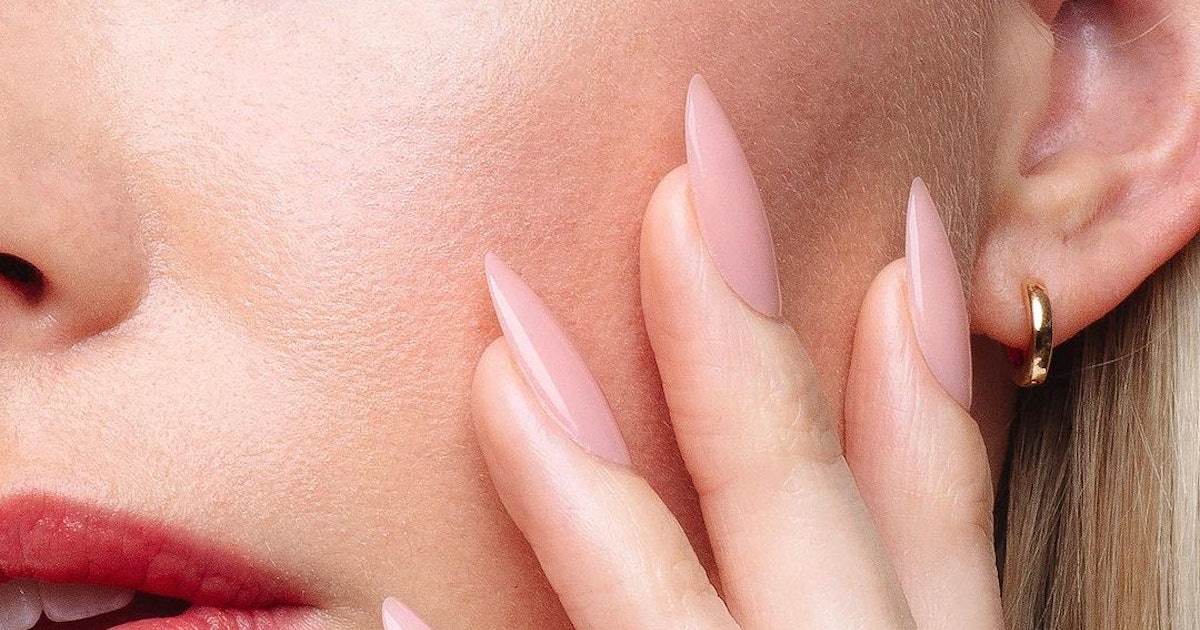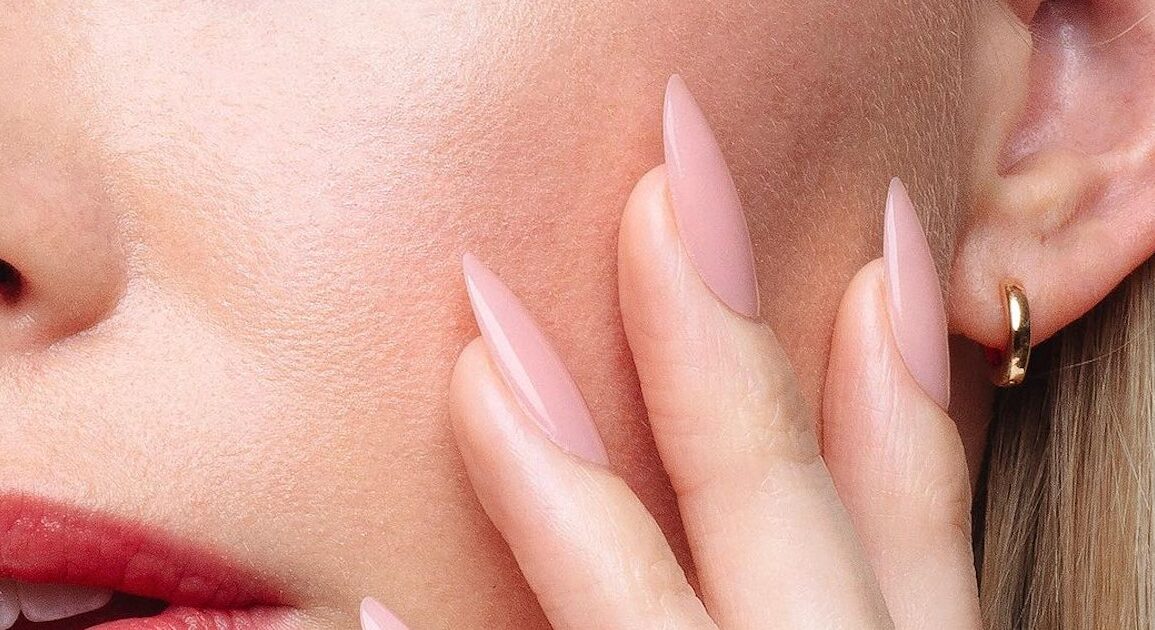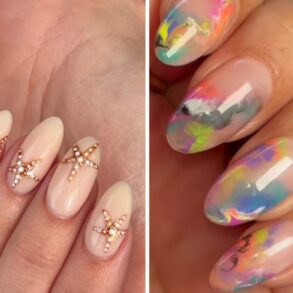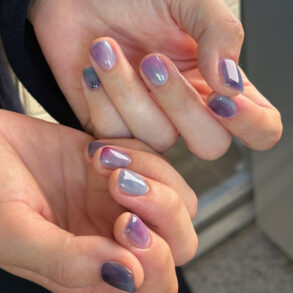
The feeling you get after leaving the nail salon with a brand new manicure is unmatched. Whether you went with the latest gel color or a cool nail art, it’s hard not to feel like you’re on cloud nine — especially if you’ve added extensions into the mix. Maybe it’s the process that feels renewing, or perhaps it’s looking down and realizing how Instagrammable your nails are now that they’re long, filed into a perfect shape, and painted an intricate design. But in the following weeks, the dread of removing your extensions may start to sink in. When done incorrectly, the process can wreak havoc on your natural nails. So as bold, dramatic manicures remain a popular choice at salons, it’s important to know how to fix damaged nails after removing your extensions.
Regardless of what type of fake nail you get, removing them should always be handled with care. “Taking extensions off at home can be very difficult and damaging if you’re not trained to do it correctly,” says Chaun Legend, celebrity nail artist to stars like Khloe Kardashian and Kylie Jenner. However, once your extensions are off, it’s a good idea to have a system in place to restore your bare nails in between sets.
Ahead, TZR tapped three nail artists for everything to know about extension removal and how to repair your nails if they’ve been damaged.
How Does Removing Extensions Damage Your Natural Nails?
Dehydration and breakage are the top concerns when removing nail extensions. “If they’re not taken off correctly, the skin around the finger can become dry and lead to irritation,” says Legend. As for the nail itself, he notes that it can actually become very weak and thin. In general, the process is a delicate one. According to Eunice Park, nail artist and research and development manager at Aprés Nails, if done incorrectly, it can thin out nails, making them break and crack more easily. “Peeling or ripping off nail extensions will take off layers of your natural nail plate,” notes Park. She continues noting that once your nails are damaged, not only will it make it harder to grow out your natural nails but nail extensions will also lift more easily.
The Right Way To Remove Nail Extensions
The first step to restoring your nails is not damaging them in the first place. If you’ve worn extensions before, be it gel or acrylic, you know that they’re applied by adhering them to your natural nails. That said, a professional who’s trained to remove them is the best way to avoid any damage. “Once the tips of the extensions have been cut down, the technician will likely use a 180-grit nail file to remove all shine of the topcoat and break the color seal,” says celebrity nail artist Stephanie Staunton.
Next, you’ll be instructed to soak your fingernails in acetone to soften the remaining product on your nails so that it can carefully be scraped off. Regardless of whether you’re wearing gel or acrylic, all three artists agree that the process needs to be gentle and can take some time to make sure that your natural nail stays intact.
How To Fix Damaged Nails After Removing Extensions
Once your extensions are completely off, your nails may appear thin and fragile. “Too often people forget how soft natural nails are — especially in comparison to gel and acrylic manicures,” says Staunton. During the removal process, acetone is stripping the nails of their natural oils and ultimately decreasing their ability to hold water. But if they don’t soak long enough (Staunton tells TZR that acrylics often require more time than gels), layers of your softened nail can accidentally be scraped off with the product.
“After you are done taking off the extensions, lightly buff your nails to smooth out ridges or remaining texture and begin moisturizing them right away,” says Legend. In that vein, a serum containing fortifying ingredients such as biotin and keratin, as well as hydrating vitamins B and E, is a good place to start.
Legend also notes that a nail cream can prove to be beneficial for nails that are severely weakened after extension removal. Just like your favorite facial moisturizer, the cream provides additional nourishment that penetrates deeper even though it is applied directly to the nail’s surface. “Cuticle oil is also essential for mending damaged nails,” notes Staunton. She recommends applying a dab at the base of the nail plate to aid in the replenishment of nutrients to your nails.
How Long Should You Wait Before Getting A New Manicure?
In general Legend, says that you should give your nails a break for three full weeks before putting your extensions back on. However, if you have extensive damage, you may need to wait a bit longer. “If you’re in pain, you should hold off on applying anything that can cause further harm, and instead, give your nails time to heal and regain their strength,” says Park.
You want to make sure your nails are healthy before getting a new manicure because it could lead to more damage. The bottom line: Maintaining a consistent aftercare routine will ensure your nails become hydrated and strong.
This post was originally published on this site be sure to check out more of their content.







